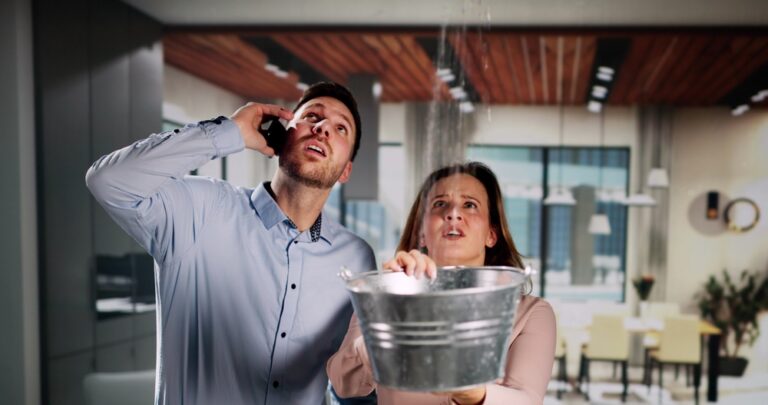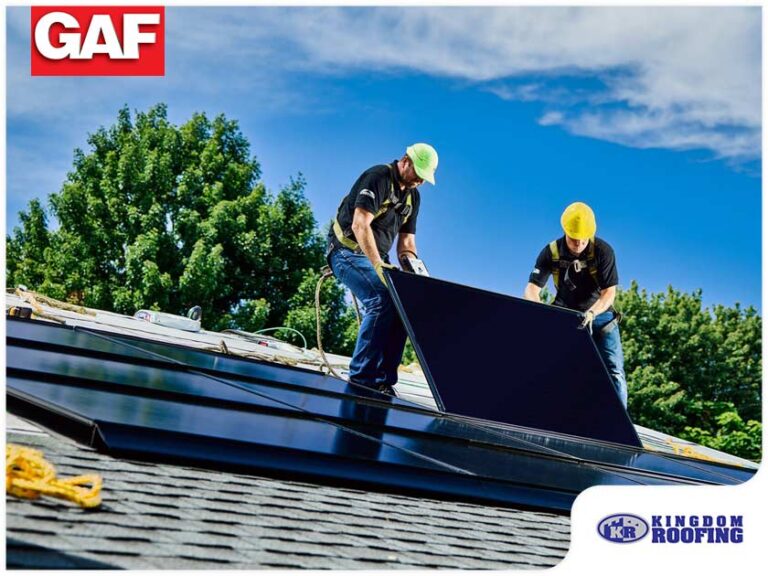Recognizing the functions of each of your roofing system’s layers is a critical thing to do. Keep in mind that your roof is more than just a covering— its components are specifically designed for a particular purpose. For example, your roof decking. This is located right between the trusses and your shingles. It forms the connecting layer between the two components, and is responsible for anchoring your shingles and the fastening down nails securely.

Understanding Roof Decks
While being flexible enough to give slightly in warm and high winds and under load, they must be strong enough to bear the weight of your roof shingles. This feature is often built by a roofing contractor with plywood or an oriented strand board. It may also be constructed of boards that are connected with a tongue-and-groove joint. On the other hand, slate and tiles are even heavier than asphalt shingles. This means that the deck should be strong enough to handle whatever roofing material you will choose for your home.
Moreover, it is expected to be equipped in helping moderate moisture levels at home by keeping rain and the snow out and allowing excess moisture to evaporate through the attic. After all, the deck is considered the base of your roofing system and what binds all of its parts together. With a good foundation, your roof will perform better and last longer, making shingles weigh hundreds of pounds per square.
What are the common causes of roof decking damage?
-
Faulty Solar Panel Installation
Although adding solar panels to your home is a great way to reduce your energy costs, its insertion must be done properly by licensed roofing replacement pros to avoid roof issues. It’s best to consult experts first before getting them to determine if your system can handle their load.
-
Poor Ventilation
All roofing systems need good ventilation for optimal performance and longevity. Keep in mind that no matter the climate of your area, having an underventilated attic can have serious consequences.
Poor ventilation causes your attic to become extremely hot, resulting in the deterioration of the decking and shingles. As likely heat may transfer to your living spaces as well, causing discomfort. This can easily increase your energy costs because your HVAC would need to work harder than usual.
In the winter, meanwhile, inadequate attic ventilation can contribute to the formation of ice dams. Once the melted snow reaches the edges of your roof, it will refreeze and form ice dams. Ice dams can cause water to penetrate your roof and cause moisture-related issues, such as rot to the decking.
-
Rot Due to Excessive Water
Constant exposure to water can cause the wooden components of your roof, such as the deck, to rot. Water can penetrate the roof through damaged or clogged gutters and damaged flashing. Deteriorating shingles and excessive snow during winter can cause water to enter your roof.
How do you know if your roof deck or sheathing has damage?
Most roof repair services experts may suggest that these particular signs may or may not be obvious. This is primarily the reason why regular inspection and maintenance are highly critical. These are some of the hints that may be easily seen nonetheless:
-
Missing shingles. Remember that roof decking can develop damage in areas of the roof where there are missing or damaged shingles due to weather extreme conditions and aging. Roofing systems normally last for at least 20 years, depending on the material, installation, and climate. If this part of your home is at least two decades old, it may be time to consider getting a roof replacement.
-
Visible sagging of the roofline or ceiling. Residential and commercial roofing replacement installers suggest that if your roofline is sagging, it could be that your deck has severe damage, making problems with the structure of your roof. Once water soaks the decking, warping can occur, causing the roofline and ceiling to bow and sag.
-
Mold and mildew. Great exposure to water can cause the wooden components of your roof, such as the deck, to rot. Water can penetrate the roof through damaged or clogged gutters and damaged flashing. Deteriorating shingles and excessive snow during winter can cause water to enter your roof.
Can you have your decking repaired?
Once your roof deck has rotted, repairing it is no longer an option. There is little to no assurance that your roof decking won’t get damaged or broken again. Because the roof decking is typically made of wood or composite wood fibers, it can still be susceptible to moisture damage. Mold and mildew may eventually develop on the boards, leading to rot that weakens the support structure of your system.
Plus, repairs are always considered a temporary solution. Renewing the deck is the better solution. This prevents further damage to the system and ensures the roof materials can have a sturdier foundation.
How Can I Protect My Roof Decking?
Any roofing contractor would suggest that protecting your roof decking is really about proper overall roof maintenance. Here are some of the ways you can do to ensure that happens:
-
Always calling and hiring a reliable roofer for maintenance, fixes, most especially, installations.
-
Ensuring your gutters are clean and in good repair.
-
Getting the right underlayment to prevent long-term water damage.
-
Having your roofing system inspected regularly and making a schedule if you’re concerned following a major weather event.
-
Making sure ventilation and insulation are working properly to protect your system from condensation issues.
-
Replacing shingles whenever possible and necessary.
-
Sealing your roof deck as a first line of defense against a leaky roof.
-
Stripping down to roof deck with every replacement so the water won’t continue to seep down.
The Bottom Line
If your system has been damaged, it’s important to act immediately so you won’t have to deal with costly repairs in the future and it’s only ideal to hire a reliable contractor for this particular job.
If you need roofing installation, roof repair services, roofing maintenance, commercial roofing, industrial roofing, residential roofing, or any other roofing service – we are experienced and ready to help. Contact [company_name] today for a free estimate on your South Florida roofing project via (941) 217-2411.



